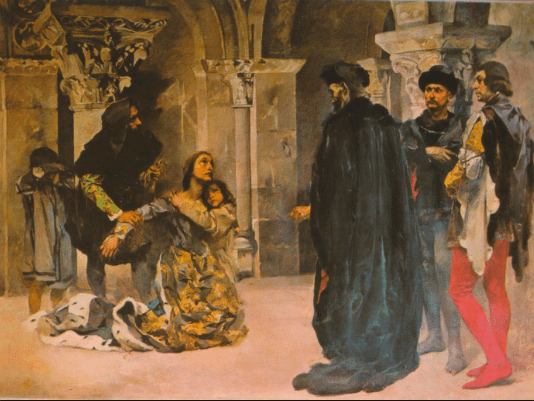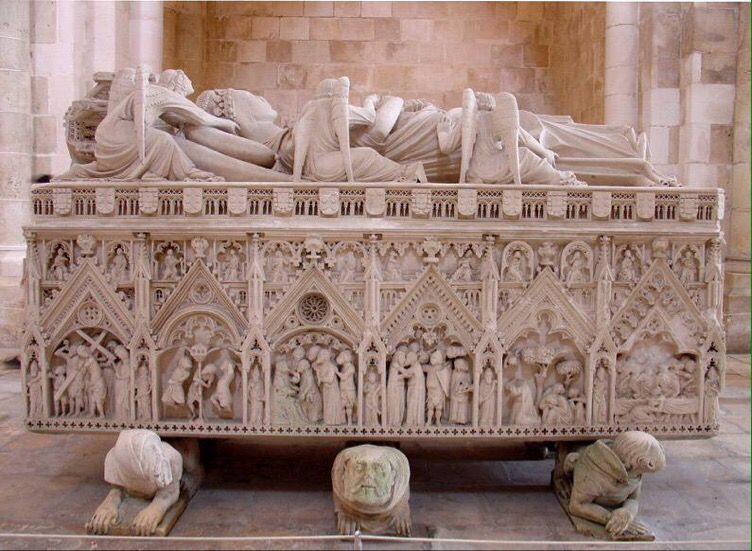I wanted to write a slightly different post this time to familiarize my readers with one of Portugal’s greatest love stories. But before you lose interest: this is no rom-com love story, it’s much more macabre and sad than the stuff movies are made of.
Inês de Castro, of both noble Portuguese and Spanish origins, came to Portugal in 1340 as one of Constance of Castile’s ladies-in-waiting. Constance had recently married the heir to the Portuguese throne, prince Pedro (later King Pedro I de Portugal). Soon enough, Pedro and Inês fell madly in love. Pedro’s father (King Afonso IV) disapproved of Pedro neglecting his rightful wife – it shook relations with Castile and brought the Castro family closer to power.
Five years later, Constance passed away and, even though Pedro wanted to marry Inês and was living with her, Afonso IV wouldn’t allow it. To make matters worse, Pedro’s only legitimate child with Constance was in poor health and his illegitimate children with Inês were all well and healthy – a concern for the balance of power in Iberian peninsula. Despite Afonso banishing Inês from the court, Pedro declared her his one true love.
To end the love affair once and for all, Afonso IV took the desperate measure of sending three men to Coimbra to assassinate her, which they did, in front of her children.

Pedro managed to find two of the murderers and gruesomely executed them in public in 1361, four years after becoming king. In 1360, Pedro declared he and Inês had in fact been secretly married and she had been the rightful queen… even though there was no evidence to support this claim.
This is where it gets even crazier: legend has it, he then exhumed Inês’ body, dressed her up – crown included – and made the entire court swear allegiance to her and kiss her hand. He wanted to give her, in her death, the respect which had not been given to her in life. Wow.
Her body was moved to the Monastery of Alcobaça, where she still lies opposite to Pedro, so that on Judgment Day they can rise from their graves and see each other again.

A few years ago a new footbridge was built in Coimbra called the Pedro e Inês bridge. Divided in two halves that don’t meet, but are joined in the middle on a platform that connects both sides, it represents the two lovers who would never be together. At least not in this life. Maybe this is the stuff movies are made.


